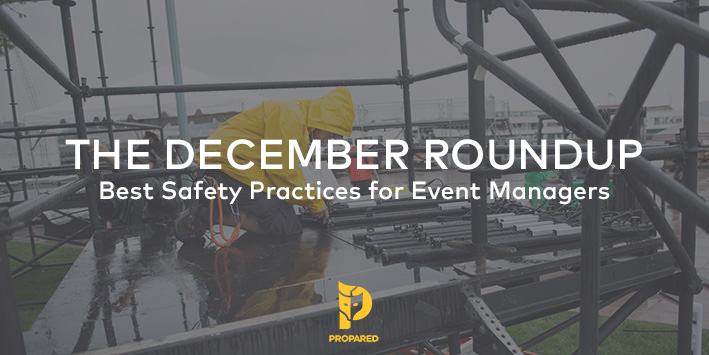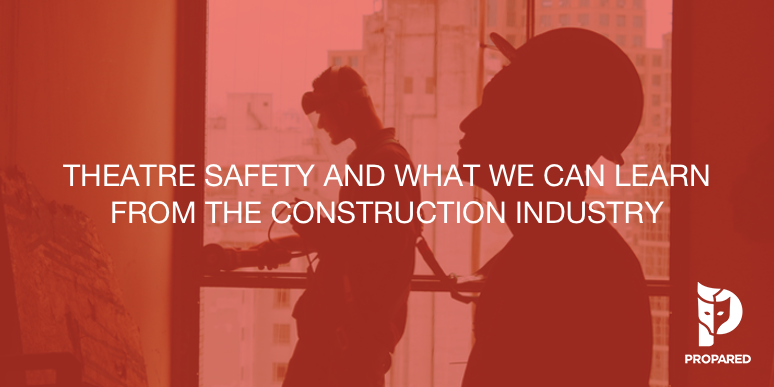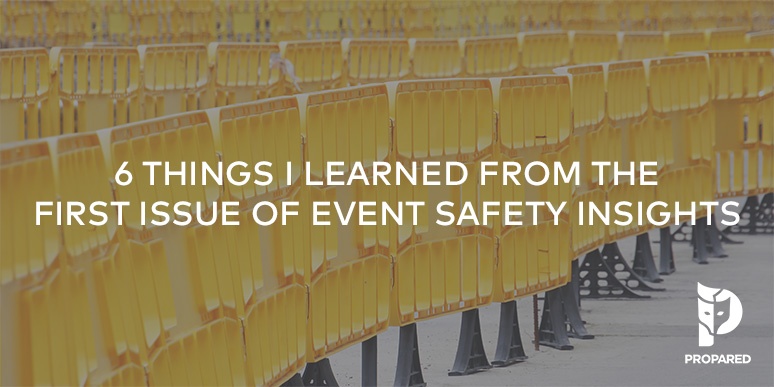
As we turn the page on 2015, we look ahead to what could be a transformative year for event production. The boom in event and audiovisual technology presents untold opportunities for brands to make deeper connections with their customers and clients. And not just make these connections but measure their investment return as well. It’s safe to say that no matter how companies use events to drive their efforts, event managers and planners should expect their work to become more complex, more demanding over the next 12 months. With increased complexity comes increased risk. Making sure you have strict, comprehensive safety plans in place will put you in position to fully embrace this exciting time in the industry.
December marked the 2nd annual Event Safety Summit, which powerfully brought various event safety procedures into hyper focus. In response, Propared partnered with Tinc Productions to produce a series of blogs, sharing the messages of the Summit with the larger event community. We’ve collected them all (as well as an oldie but goodie) in an easy-to-navigate roundup below. Here’s hoping your 2016 is off to a great (and safe) start!
1. The Ultimate Event Production Manager’s Guide to Contingency Planning
When planning in event production, we lay out a set of tasks that bring about our goals as successfully as possible. It’s that very reason that makes contingency planning for events so difficult: it flies in the face of everything we’re attempting to achieve. When we’re constantly thinking about how to do it best, it’s hard to shift gears and plan for the worst. Furthermore, there are an infinite number of things that could go wrong. How can we possibly anticipate all of them? For which do you plan? Where do you draw the line?
The answer lies in risk assessment. That’s a fancy sounding phrase for, “Ask yourself which bad things are most likely to happen.” Once you’ve done this, you’ll likely be able to narrow the list significantly. For example, when working with clients on an event, do you plan for the possibility of needing additional lighting or do you reinforce the structural integrity of the entire venue in case a Jumbo Jet crashes into it? I’d be willing to bet there are events that answer that question differently.
Once we recognize the most likely issues at our particular event, we can then begin preparing for them. There is one thing that is above all else, important to remember.
PREPARE EVERYONE, NOT JUST YOURSELF.
Events are large and handling emergencies will required the combined efforts of a lot of people. There’s no time to pull a plan together once the emergency has happened. Here are some standard levels of severity and how to plan for accidents at any event.
2. 16 Tips for Managing Tent Risk in Live Events
Last week I had the honor of attending the annual summit of the Event Safety Alliance. Over the next few weeks, I’ll be writing a series of blogs on some of what I learned.
We heard a presentation given by Tim Roberts about the complexities and potential dangers of designing, setting up, and operating tents in the event production world. The trick is that each of these tasks is performed by different entities. The company that made the tent rarely has anything to do with it once it is on site.
Even more importantly, each entity also holds vital information that the others need to do their jobs. Often failure stems from lapses in communication along a chain of stakeholders including the manufacturer, the supplier, and the end client. Let’s look at each in turn which may help us understand what kind of information is important for each party to obtain.
3. The Forecast Says Rain: How to Build a Plan for Bad Weather At Events
Why do the best event and production managers spend so much time planning? Even after amassing thousands of hours on site? Quite simply because they know they can’t control everything. Years of experience have taught them to be ready for situations that can and will occur, no matter how secure everything seems.
One of the most common elements that event planners battle is the weather. Especially when it turns severe. And there’s nothing that can be done to stop a storm from hitting your event. Whether it’s indoor or outdoor, weather can still have an effect on your show. Indoor, really? Ask anyone who had an event planned in New York City about 3 years ago. You can be sure Hurricane Sandy didn’t discriminate as its flood waters ran through lower Manhattan.
At the annual Event Safety Summit, which concluded December 3rd, president of Lambda Productions, Hadden Hippsley shared some excellent insights into event logistics and the development of severe weather plans. While every event is different, here are some practical ways you can raise your overall level of preparedness.
4. Playing with Fire: 3 Considerations for Special Effects in Live Events
Earlier this month I heard a presentation given by Bob Ross, Doug Adams, and Fiona Thain from Pyrotekabout some of the serious considerations that need to be taken into account when deciding whether or not to use special effects in your show. Whether you’re a designer, a producer, or a planner, here’s some great stuff to keep in mind.
THE DANGERS
1. SPECIAL EFFECTS ARE BECOMING CHEAPER
In the not too distant past, special effects were expensive enough to be kept out of the hands of amateurs (this will be the theme of an upcoming blog about drones as well). Recently though, there are a flood of cheap products coming out of China. Barriers to entry are lowering, putting potentially dangerous effects into the hands of more untrained people. The price point makes them attractive. This means it is up to us to keep a watchful eye on our events.



